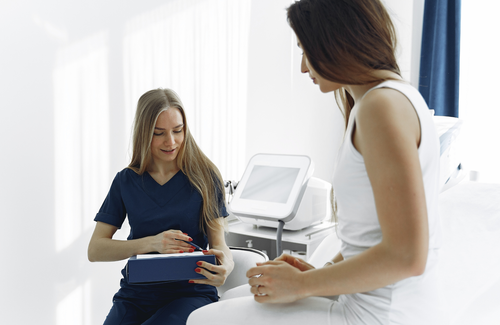
Key points
- LGV is a form of chlamydia. Tests for chlamydia also detect LGV.
- Most LGV cases are in gay men living with HIV. It is often diagnosed at the same time as another sexually transmitted infection or blood-borne disease.
- LGV is treated with a course of antibiotics.
Lymphogranuloma venereum (LGV) is a form of the common sexually transmitted infection (STI) chlamydia. It can have serious consequences if left untreated.
LGV is caused by specific strains of the Chlamydia trachomatis bacteria (strains L1, L2, L2b and L3) and is more invasive (i.e. gets into the tissue of the body) than more common types of Chlamydia.
LGV had been rare in industrialised countries until the early 2000s. Since 2003, however, there have been a series of LGV outbreaks reported across Europe, mostly affecting HIV-positive men who have sex with men (MSM).
The majority of LGV infections are found in London, with high rates in Brighton and Manchester as well.
Nearly all these cases are in men who have sex with men (MSM). In 2015, around two-thirds of infections were in men living with HIV, either already diagnosed with HIV or diagnosed with both HIV and LGV at the same time. It is common for LGV to be diagnosed at the same time as another STI or blood-borne infection, most commonly syphilis, gonorrhoea or hepatitis C.
Transmission
LGV is almost exclusively transmitted sexually. The bacteria enter through a moist mucosal surface – most commonly, the rectum or vagina, but infections in the penis or mouth are also possible. Like all sexually transmitted infections, anyone who has vaginal, anal and/or oral sex without using a condom can acquire LGV.
The activity with the highest risk of LGV transmission is unprotected anal intercourse. Fisting, sharing of sex toys and rectal douching can also lead to LGV transmission.
Prevention
The risk of LGV infection can be reduced by using condoms consistently and correctly during sex and using latex gloves for fisting. If you are having sex with more than one person, a new condom or glove should be used with each partner. If condoms or gloves are not used, thorough washing between partners is better than nothing.
Using condoms with shared sex toys or cleaning them thoroughly with hot soapy water between uses also reduces the risk of passing on LGV.
If you find out you have had sex with someone who has LGV, have a check-up immediately and don’t have sex again until you have been given the all-clear.
People who are sexually active are advised to have regular sexual health check-ups, where they will be tested for a range of sexually transmitted infections. Sexual health clinics offer confidential and free treatment. You don't need to be referred by your GP or your HIV doctor. If you are concerned that you might have LGV, then it's a good idea to make sure that you tell the doctors or nurses at the clinic you are attending.
Symptoms
The incubation period for LGV is between 3 and 30 days. Symptoms can be complex and severe, causing swollen lymph nodes, fever, muscular pain and general ill health.
There are three stages of infection and symptoms vary depending on which part of the body is infected. They can affect different parts of the body, such as the genitals, the anus, rectum, mouth and lymph nodes.
Stage one: Symptoms usually develop between three days and three weeks after exposure. A small, painless blister or sore appears where the infection first entered the body. This may go unnoticed. There can be small groups of these, which look a little like herpes infection. There may also be blisters on other parts of the body, such as around the anus, or on the lip or in the mouth, as well as systemic symptoms such as fever and tiredness. A tender spot can develop in the lymph glands in the groin. Men may experience proctitis, an inflammation of the lining of the rectum (the rectal mucosa). Other symptoms include rectal pain, discharge, bloody stools, constipation and tenesmus (the feeling of needing to empty the bowels). However, many people may have no symptoms at this stage. This is particularly true for women.
"The risk of LGV infection can be reduced by using condoms consistently and correctly during sex and using latex gloves for fisting."
Stage two: Usually between 10 and 30 days after exposure, inflamed and swollen lymph glands may appear in the groin, armpit or neck. Anal infection can cause painful ulcerations, discharge and bleeding. You may have a fever or rash.
Stage three: Most people recover after the second stage of LGV if they get appropriate treatment. If left untreated, the symptoms can become more severe, causing general swelling of the lymph glands, extreme swelling of the genitals, with ulcers, and damage inside the rectum or vagina, causing lasting damage to infected tissue and general health. Scarring, swelling and deformity in infected areas has also been reported. Spread of the bacteria throughout the body can occasionally lead to reactive arthritis. Although there has been an increase in the number of cases, there has not been a high rate of these complications in MSM.
You can still pass the infection on to sexual partners if you don’t have symptoms.
Diagnosis
Tests for chlamydia will also detect LGV infection, so a negative chlamydia test means no LGV infection. Chlamydia is diagnosed by checking a urine sample or taking swabs from affected areas, such as the rectum, urethra, vagina or throat.
If you test positive for chlamydia and have LGV-type symptoms, you will have a specialised test to clarify whether the infection is LGV rather than another type of chlamydia.
Treatment
Most cases of LGV can be treated using a 21-day course of the oral antibiotic doxycycline. There are other antibiotics that will work against LGV if this is not suitable for some reason, but there are few interactions between doxycycline and anti-HIV drugs. Your symptoms should improve in one to two weeks after starting treatment, but it may take longer if you have had the infection for some time.
It is important that you do not have sex if you have LGV, or any other sexually transmitted infection, until follow-up tests confirm that you no longer have the infection.
Sexual partners who may have been at risk of infection should also, if possible, be identified, tested and treated.
It is possible to become infected with LGV again after being successfully treated. To avoid this, make sure any of your sexual partners have also been treated. Condoms, used properly and consistently, can prevent infection with LGV and many other sexually transmitted infections.

